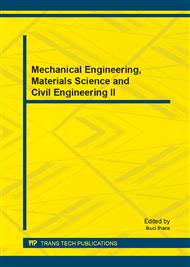p.371
p.376
p.381
p.387
p.392
p.396
p.400
p.404
p.408
Constructing New Product Development for the DC Cooling Fan Industry: ISO/TS16949 Procedures
Abstract:
Applications of DC cooling fans in auto electronics cover a wide range of areas. Since they all need to meet the requirement of the clients in providing customized products, many product combinations have been developed. In the past, when DC cooling fans manufacturers have not implemented the requirements of TS16949 and the core tools, their developmental process could only meet the spirit of process-orientation suggested by ISO9001. There was an obvious deficiency in terms of the quality management tools during the development and manufacturing processes, as well as the development information that should be produced; therefore, they were unable to meet the requirements of TS16949. This study constructs a new product development (NPD) procedure through the application of the five core tools that meets the requirements of TS16949, and satisfies the characteristics of the DC cooling fans industry. With this process, the Taiwanese DC cooling fans industry can effectively control the entire production process, from sales and marketing, R&D, manufacturing, to customer services. Moreover, the manufacturers could not only elevate their ability to self-manage, but also meet the requirements and gain market shares in the international automobile supply chain.
Info:
Periodical:
Pages:
392-395
Citation:
Online since:
December 2013
Authors:
Price:
Сopyright:
© 2014 Trans Tech Publications Ltd. All Rights Reserved
Share:
Citation:


